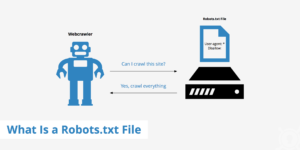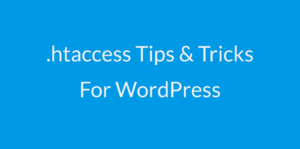Are you ready to start your own WordPress blog but not sure where to start? Look no further! In this blog post, we’ll provide an easy-to-follow guide on how to configure your WordPress blog in 15 minutes or less. From choosing a domain name to setting up essential plugins and styling the website, you can have everything ready to go quickly and efficiently.
Introduction to WordPress
Assuming you have already set up your hosting and domain name, congrats! You are almost ready to start blogging with WordPress.
First, you need to go to your hosting cPanel and find the WordPress icon. Once you click on it, it will take you to the Installatron screen. On that screen, select “Install this application.” After a few seconds, you will see a successful installation message along with your WordPress administrator URL, username, and password.
Now that WordPress is installed on your site, it’s time to access your blog’s admin area and start writing some posts!
Benefits of Using WordPress
WordPress is one of the most popular blog platforms for a reason – it is easy to use, has a ton of features and plugins, and is highly customizable. Whether you are looking to start a personal blog or a professional website, WordPress is a great choice. In this article, we will discuss some of the benefits of using WordPress.
WordPress is Easy to Use: One of the main reasons why people choose WordPress is because it is very user-friendly. Even if you have never created a website before, you can easily create a beautiful website with WordPress. There are tons of tutorials and resources available online that can help you get started with WordPress.
A Ton of Features: WordPress comes with a lot of features that can help you create a powerful website. Some of these features include a customizable dashboard, themes, plugins, and widgets. With so many features available, you can really customize your WordPress site to fit your needs.
Highly Customizable: Another great benefit of using WordPress is that it is highly customizable. You can change the look and feel of your website by choosing from a wide variety of themes and plugins. If you want to add more functionality to your website, there are also thousands of plugins available for free that you can install on your site.
Getting Set Up - Domain Name and Hosting Provider
If you want to blog on WordPress, the first thing you need is a domain name and hosting provider. A domain name is the web address people will use to find your site, while a hosting provider is a company that stores your site’s files and makes sure they are accessible online.
There are a lot of domain name and hosting providers to choose from, so it’s important to do some research before settling on one. Once you have chosen a domain name and hosting provider, you can set up your WordPress site in minutes or less. Here’s how:
1) Choose a domain name and register it with your chosen provider. Be sure to check if the “.com” version of your desired domain name is available – it’s the most popular choice and will make it easier for people to find your site.
2) Set up your hosting account with your chosen provider. Some providers offer one-click WordPress installation, which makes setting up your site quick and easy.
3) Log in to your new WordPress site and start blogging!
Choosing a Design Theme
When it comes to creating a WordPress blog, one of the first things you’ll need to do is choose a design theme. This can be a daunting task, especially if you’re not sure what you’re looking for.
Luckily, there are a few things you can keep in mind that will help you narrow down your choices and find the perfect theme for your blog.
First, think about what kind of feel you want your blog to have. Do you want it to be light and airy? Or dark and moody? Once you have an idea of the overall aesthetic you’re going for, it will be easier to find a theme that matches.
Next, consider what kind of features you need or want your theme to have. Do you want it to be simple and clean, or more complex with multiple sidebar options? Would social media icons be helpful? Knowing what sort of functionality you’re after will help you zero in on the right theme.
Finally, take some time to browse through the many themes available until you find one that speaks to you. It may take some trial and error, but eventually you’ll find the perfect design for your new WordPress blog!
Installing Plugins
Assuming you have WordPress set up and running on your server (website), you may now begin installing plugins. While there are many ways to obtain and install plugins, the easiest is to use the built-in Plugin Directory. This can be accessed from your WordPress Administration area by selecting Plugins > Add New.
The WordPress Plugin Directory is a great resource for finding just about any plugin you could ever want. Use the search box in the upper right hand corner of the screen to search for a specific plugin, or browse the Featured, Popular, Newest, and Recommended tabs.
Once you’ve found a plugin that looks promising, click on the Details link to read more about it. Here you’ll find information such as the plugin author, version, number of downloads, active installs, ratings, and a changelog. The Details screen is also where you can install a plugin directly from the directory.
Click on the Install Now button and WordPress will take care of the rest! The next step is to activate your new plugin so that it can begin doing its job.
Setting up Your Blog Posts
Assuming you already have WordPress installed (if not, see this handy guide), creating a new blog post is easy. Simply log in to your WordPress administration panel and navigate to the “Posts” section. From there, click “Add New” to create a new post.
You will then be presented with the WordPress editor, which allows you to easily add text, images, videos, and more to your blog post. Be sure to take advantage of the various features available, such as adding hyperlinks and formatting your text.
Once you are satisfied with your blog post, simply click “Publish” to make it live on your website. And that’s it – you’ve now created a new blog post!
Creating Pages
Creating pages in WordPress is quick and easy. You can create a new page by going to the Pages > Add New section of your WordPress dashboard. On the Add New Page screen, you can add a title and content for your page. Once you are finished creating your page, you can publish it by clicking on the Publish button.
Promotion Strategies
There are a few things you can do to get your WordPress blog up and running quickly and easily. First, make sure you have a good theme installed and activated. Second, install and activate some essential plugins. And third, start writing great content!
If you want to get your WordPress blog up and running quickly, there are a few key promotion strategies you should follow. First, install a great theme that will make your site look professional and stylish. Second, install some essential plugins that will add important features and functionality to your site. And third, start writing great content that will attract readers and followers! By following these simple steps, you can have your WordPress blog up and running in no time at all!
Conclusion
Starting a blog can be an exciting and rewarding experience, but it can also seem overwhelming for beginners. However, with WordPress, it’s easier than ever to start your own blog. By following these simple steps, you can have your WordPress blog up and running in just 15 minutes or less. From there, the sky’s the limit in terms of what you can do with your blog.



